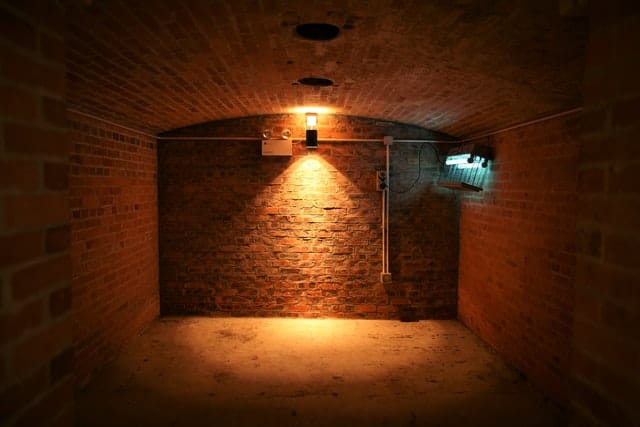How To Clean Up a Flooded Basement: Essential Steps to Take
POSTED ON November 29, 2021
Basements are usually at some depth beneath ground zero. Due to this, basement flooding can be an unfortunate challenge some parts of Australia pose. So, if you or someone you know have experienced basement flooding, know that you’re not alone.

At Paul's Cleaning (Sydney), we know that cleaning after flooding in basements is no joke. It can create a flurry of problems, such as water damage, mould growth, contamination, electrical failures, and so much more. Overall, basement flooding can cause severe damage to your home if it isn’t handled correctly.
Causes of basement flooding
Acccording to The Guardian, Australia is primed to flooding.
So, when a severe rainstorm or snowstorm happens, water can seep into the foundation of your home. However, that’s just one example of a common cause for floods in basements.
Extreme weather
Extreme weather such as heavy rain or rapid snowmelt can cause water to pool around your home. This can cause water to seep into your house and, eventually, your basement. If your home is close to a natural stream, the chances of flooding are much higher.
Appliance failure
Your appliances won’t last forever. Expect them to run down over time. Appliances such as washing machines, refrigerators, or dishwashers can malfunction and cause flooding since they require water to operate.
Outdated or broken appliances can leak and eventually cause moisture damage.
Leaks and cracks
Leaks or cracks in your home can also cause basement floods.
For example, leaky pipes or cracks in your foundation can cause water to pool or seep into your basement if left unchecked. This can happen when groundwater levels rise above the basement and gravity pulls the water down, helping it locate cracks in the foundation to seep through.
Sewer system problems
A malfunctioning sewer system can also cause basement floods. When the sewer system is overwhelmed, and the water level exceeds volume, the overflow will eventually lead to your home. During heavy rainfall, this is a common problem where the sewer system works extra hard and can’t handle the amount of water coming in.
Location of your home
The location of your home can also cause basement floods. If you live near a body of water, floods can happen during severe weather.
Also, if your yard has large hills or doesn’t slope away from your home, water will flow towards your house, and it will eventually cause flooding.
Sump pump problems
One of the potential sources for flooding in your basement can come from the sump pump. When your sump pump is damaged, a basement flood can occur. You should inspect sump pumps regularly to avoid malfunction or damage.
Here’s what you need to do before cleaning your flooded basement
If your basement is flooded, don’t wait any longer to take action. The sooner you act, the better it is. Leaving your basement flooded can wreak havoc on your home and cause long-term problems.
So, if you happen to find water in your basement, here are a few things you should do:
Make sure the basement is safe to enter
If you find water in your basement, the first thing you need to check is whether it’s safe for you to enter. If the water has risen above an electrical outlet, there’s a high possibility that electrical currents are running through the water. This is dangerous because you can get electrocuted if you touch the water. If you cannot reach the power breaker without touching the water, you would need to call in a professional to help.
Locate the source of water
The next thing you need to find out is where the water is coming from. If the flood isn’t so bad, and you can go down to investigate the water source, check for prominent areas such as pipes or cracks in your walls or floors.
This may be challenging if your pipes are inside your walls.
Identify the type of water
The type of water in your basement matters.
Blackwater contamination might be one of the worst effects of water damage. Water contamination is divided into three categories.
- Category 1 is clean water from sanitary sources.
- Category 2 is grey water from home appliances that can be dangerous if ingested.
- Category 3 is black water from unsanitary sources such as lakes or rivers.
Contact your plumber
Once you have identified the type of water, where it has come from, and how difficult the situation is, it’s time to call a plumbing or water damage restoration professional.
Today, you can choose from a vast variety of basement flood cleanup companies. If you have insurance, contact your insurance company to determine what will be covered under your current plan and what you’re liable for.
How to clean up a flooded basement
So, you got what it takes to clean up a flooded basement?
Here are the main steps you need to follow to make sure your basement is flood-free and clean.
Cut off power
If you can access the main breaker, you need to cut off the power to the area. If the water in the basement has risen above an electrical outlet, it would be dangerous to go down there. So, the first thing you would need to do is find the main breaker to cut off the power in the basement.
Remove water
Once you have cut off the power, it’s time to find the water source and remove as much as you can. Once you have located the source of water and have stopped the flooding, you want to start drying the basement as soon as possible.
You can begin this process by removing any wet puddles with a mop or a wet vacuum to begin the cleanup and water removal process. You might need a pool pump, sump pump, or a basic mop and bucket.
Keep the area dry
If you have removed most of the water in the basement, try your best to keep the area dry.
Basements don’t have a lot of ventilation and can be prone to mould growth and water damage. If you need extra help keeping your basement dry, dehumidifiers, fans, and air conditioners might be your best bet.
Although they might be expensive initially, they’re excellent investments in the long run.
Sterilize the location
The last and most crucial step is to sterilize your basement. Inspect any belongings or materials that have been water damaged or contaminated by the floodwater. If needed, you might have to throw away affected items. You should also observe any wooden materials and your drywalls to ensure that they’re still in good condition.
How to prevent basement flooding in the future
Preventing floods in basements is impossible, but decreasing the chances of it happening is doable. There are a few things you can do to keep your basement and home in tip-top shape and help prevent flooding in the future.
Keep your drains clear.
Clogged drains can cause flooding in your home. So, one of the best ways to prevent basement flooding and waterproof your home is to keep your drains clear. Clogs may happen from time to time, so it’s essential to make time to keep your drains clean and free of debris.
A simple way to keep your drainages clear is by using a drain guard to help reduce the amount of waste that gets washed down your sink or tub. The use of drain cleaners in the long run also helps prevent blockages in the future.
Another thing you can do is wash out your drains with boiling water every week. Lastly, keep an eye on what you flush down your toilets. Flushing large items or things that aren’t supposed to go into your toilet can cause clogging and flooding— and you don’t want that.
Avoid using too much water during heavy rainfall.
One of the most simple things you can do to prevent flooding is to reduce water usage during heavy rainfall. Avoid using too much water, since this can overload the sewer system while it’s already working extra hard to keep the waterways clean of rainwater.
By using too much water during a heavy rainstorm, raw sewage can be discharged into local rivers and cause overflow, which in turn can cause flooding. Although your effort in reducing water usage might seem like a minor feat, it’s a great way to keep your waterways clear and reduce the chances of flooding in your basement and home.
Frequently inspect your home for signs of damage
Most severe flooding and water damage cases are the results of unchecked problems such as broken pipes or leaks. These minor problems can grow into more significant issues such as mold growth and eventually water damage when left untreated.
Another way you can prevent basement flooding is to make time and regularly inspect your property for any signs of damages and repair them as soon as you can. Doing so will save you from a hefty bill of restoration and keep your home in tip-top shape.
Doing regular maintenance is also a great way to increase your home’s value and help you save up thousands of dollars on repairs in the future, which sounds like an excellent investment.
Don’t hesitate to call a professional if you’re unsure what to do or have no time to waste dealing with leaks or damages. If you get repairs done early on while damage is minimal, you won’t have to deal with an expensive repair bill.
Reroute water away from your home
If your house is located in a ‘flood risk area’ and vulnerable to flooding, rerouting water away from your home is an excellent way to prevent water damage. You can do this by installing underground drain pipes or catch basins.
This option might be more expensive but will surely benefit you in the long run. You no longer have to worry about water entering your home, and you will reduce the chances of water damage significantly.
Wrapping Up
Basement floods can be extremely stressful and overwhelming to handle. However, with the proper steps, you can clean up a flooded basement with ease. In addition to learning how to clean up a flooded basement, you should also focus on flood prevention and waterproofing your basement. Regularly observing your home for signs of damage, repairing any leaks or cracks early on, and minimizing water usage during heavy rainfall can help keep your basement safe and dry from potential flooding.





